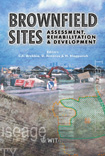Public Health Role In Redevelopment Efforts
Price
Free (open access)
Transaction
Volume
55
Pages
Published
2002
Size
722 kb
Paper DOI
10.2495/BF020171
Copyright
WIT Press
Author(s)
J. J. Reyes, R. C. Williams & P. McCumiskey
Abstract
Brownfields should be remediated and redeveloped, but what should replace them? What kind of assessment and cleanup is warranted? What are the public health implications of the proposed reuse? All of these are questions that public health practitioners and investigators can and do respond to when needed. As professionals sensitive to the complex needs of low- income and minority communities, public health officials can facilitate closer integration of environmental protection, economic sustainability, social justice, and health promotion. The US. environmental public health community has played an important role in redevelopment initiatives and continues to make important contributions in this field. 1 Introduction In the United States, there is a renewed interest in urbanism driven by individuals seeking to live closer to work and shorten their daily commutes. As a result, federal and state governments, and local communities are providing incentives to restore to productive use abandoned or contaminated lands. Such revitalization helps to create jobs, remove physical decay and contamination, improve public safety, and eliminate social disparities. The resulting benefits, and improvements greatly contribute to the establishment of a sustainable and healthy community. In fact, redevelopment is typically and correctly promoted as a means to economic revitalization and better health through improved quality of life. Stated simply, redevelopment, the resulting community revitalization, and public health are inseparable. The quality of housing, unemployment, green and recreational spaces, transportation, social services, and economic prosperity all influence human health outcomes and help define the health status of a community. An effective public health system must participate in decisions about housing, public safety, land use, and other vital realms of social life that affect the creation and sustainability of a healthy community. [1] What has not always been evident in revitalization initiatives in the United States is how federal, state, and local public health departments can be involved in the redevelopment and reuse of contaminated properties. Indeed, there is no legislative mandate that requires
Keywords




